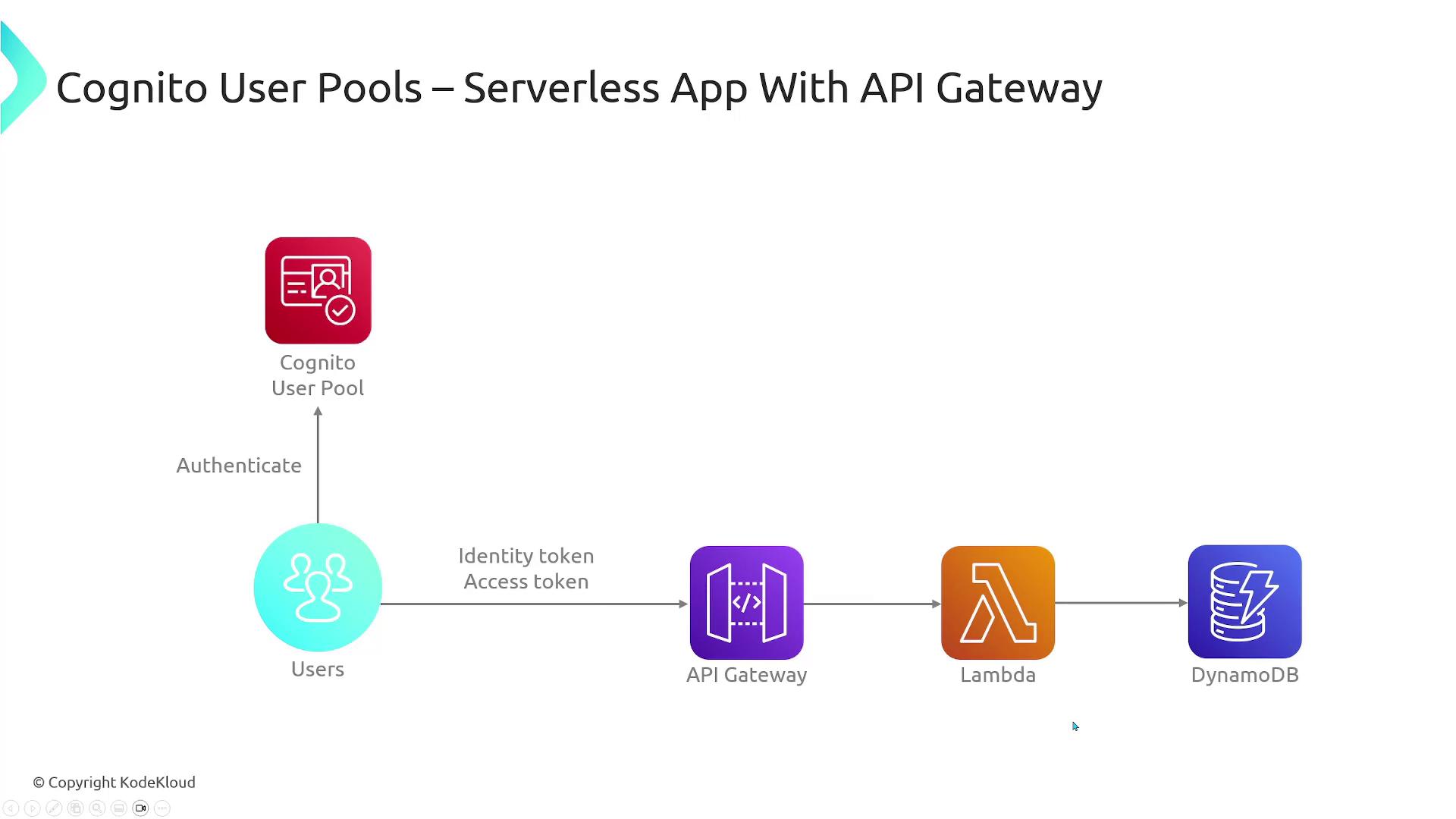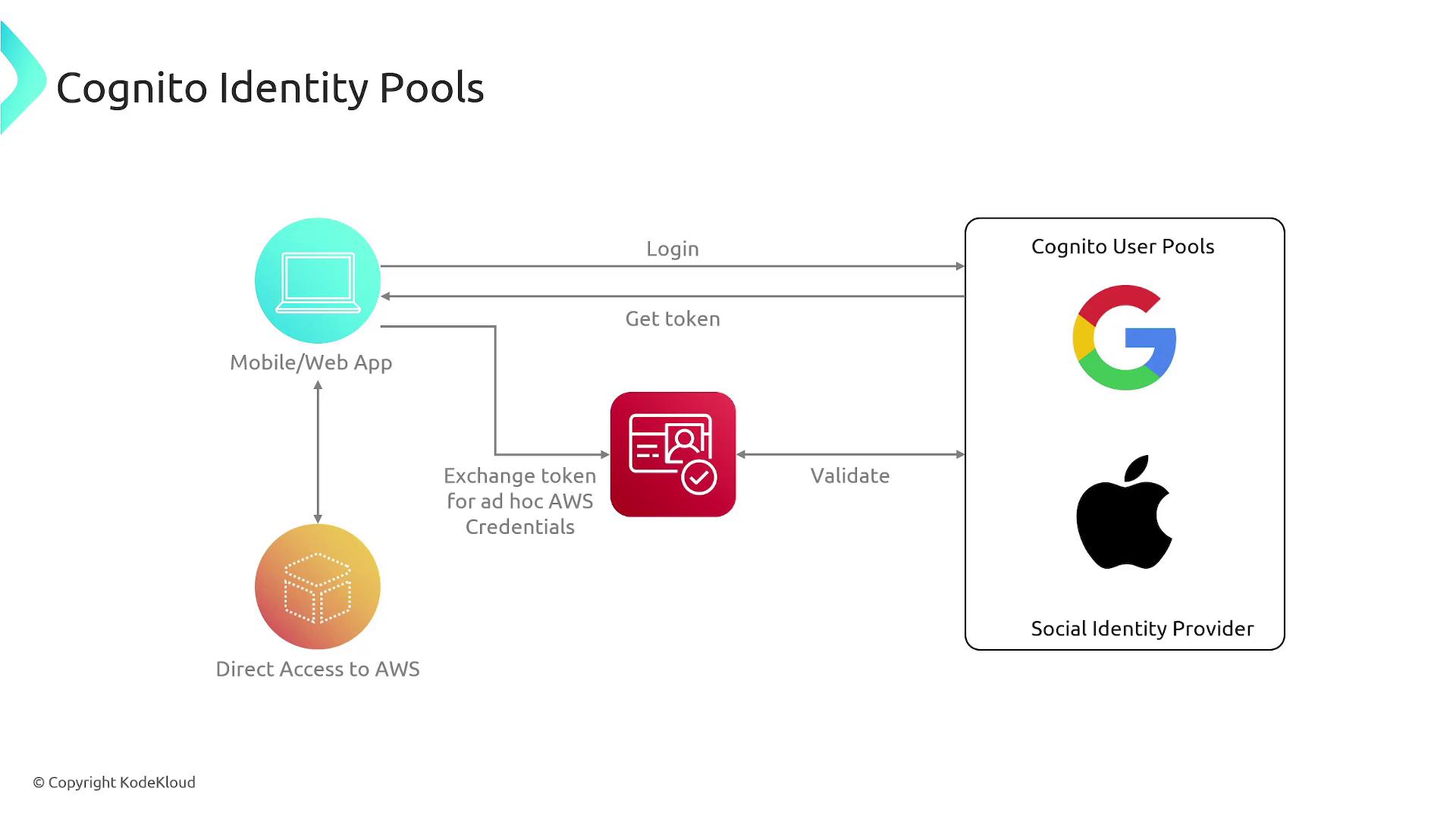AWS Solutions Architect Associate Certification
Services Security
Cognito
Amazon Cognito is a powerful service designed to simplify user authentication and identity management in your applications. By leveraging Cognito, you can avoid the risks and complexities of building your own authentication system, ensuring secure password storage, seamless integration with third-party identity providers, rapid implementation, cost efficiency, and scalability.
Note
Using a proven service like Amazon Cognito allows you to offload critical security and maintenance tasks, letting you focus on core application features.
Cognito is built for application-level user authentication rather than AWS resource access. While AWS IAM and IAM Identity Center manage AWS account authentication, Cognito handles key user actions such as sign-up, sign-in, and sign-out, which simplifies user management for developers.
Cognito provides several clear benefits:
- Secure password storage that meets industry standards.
- Integration with multiple third-party identity providers such as Facebook, Google, or Apple.
- Rapid authentication setup to help you launch your application quickly.
- A pay-as-you-go pricing model where you only pay for the resources you use.
- Scalability to support millions of users and hundreds of transactions per second.
![]()
Cognito User Pools
AWS Cognito offers two main components, starting with Cognito User Pools, which provide a managed user directory and authentication service. User Pools support user registration, authentication, and token issuance for applications hosted on AWS, other cloud platforms, or on-premises. This makes it an excellent solution for applications that utilize services like API Gateway, Lambda functions, and DynamoDB.
How Cognito User Pools work:
- Users register and authenticate against the Cognito User Pool.
- Upon successful authentication, the user receives a token.
- The token is then transmitted from the client to your application during subsequent operations.
- The application verifies the token to confirm the user’s authentication status.
The diagram below represents a typical serverless application architecture using Cognito User Pools in conjunction with AWS API Gateway, Lambda, and DynamoDB:

Cognito Identity Pools
Cognito Identity Pools enable you to grant authenticated users temporary access to AWS resources. After a user authenticates via the User Pool and obtains a token, that token can be exchanged with an Identity Pool to receive temporary AWS credentials. With these credentials, users can securely interact with services such as Amazon S3 for file uploads and other AWS resources.
This approach seamlessly integrates application-level authentication with AWS resource authorization.
The following diagram outlines the authentication flow when using Cognito Identity Pools:

Summary
- Use Cognito User Pools for managing application-level authentication, including registration, sign-in, and token issuance.
- Use Cognito Identity Pools to grant authenticated users temporary AWS credentials for accessing AWS resources.
By adopting AWS Cognito, you can quickly build secure, scalable applications while leveraging the robust security and integration capabilities provided by AWS.
For additional resources and guidance, check out:
Watch Video
Watch video content